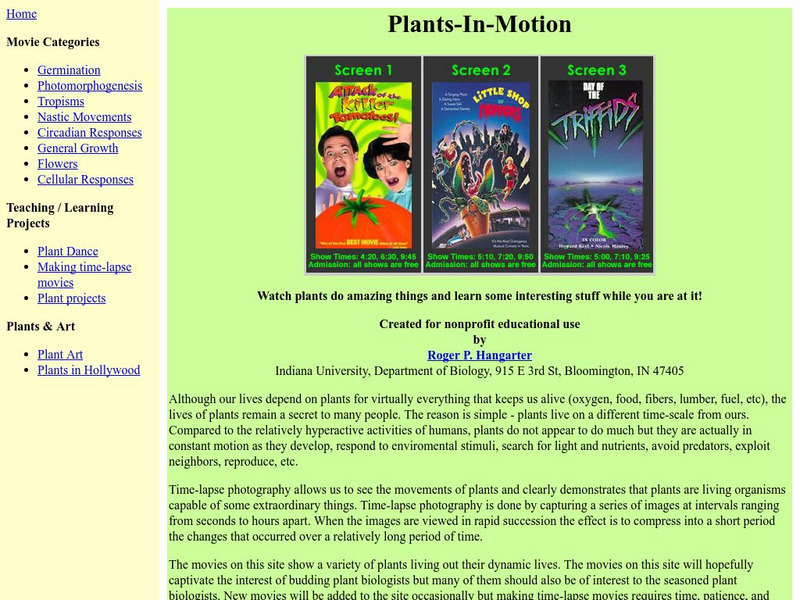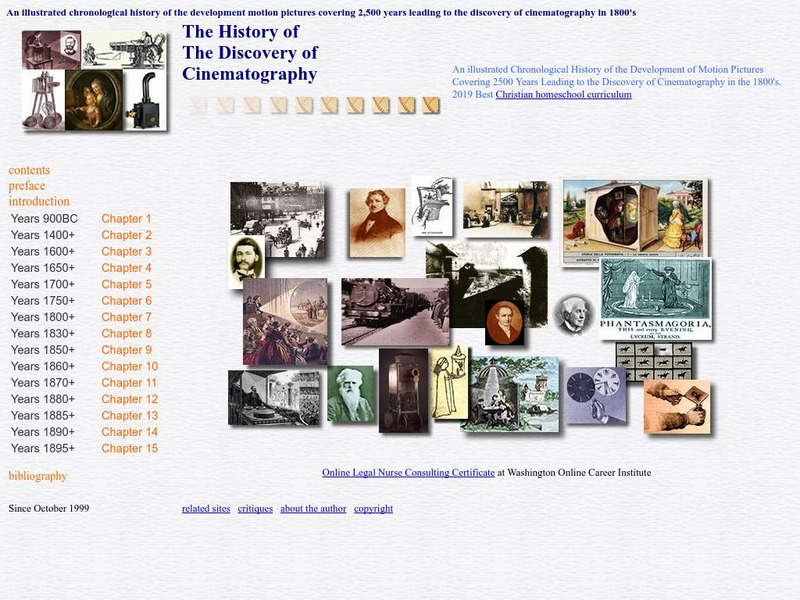Curated OER
Lesson 4 Activity 1: Mapping the Third Dimension
Students work in pairs to construct a simple stereoscope.
Curated OER
Animation Pre-Production
Does your class love reading cartoons? Use their talents and interests to examine the process of writing a story they wish to tell through a cartoon. They develop the beginning, middle, and end of a story based on their original...
Curated OER
Visual Composition
Students study how elements of visual composition and group storyboards for a one-minute videotaped commercial.
Curated OER
How Old Are the Stars?
Students determine the age of a star cluster by observing, measuring, and plotting astronomical data. They examine the Jewe lbox cluster, located within the southern constellation Crux and determine its age.
Curated OER
Aerobic and Anaerobic Microbe Analysis in a Subarctic Setting
Students investigate the relationships between protozoa, algae and monera in freshwater, shoreline soil, and reindeer rumen. They publish reports of their findings.
Curated OER
Simple Machines In Action
Learners name and recognize six types of simple machines. They use their research to design an amusement park ride that features different types of simple machines. Students create a brochure about their ride and how it works. Simple...
Curated OER
Animation
Studnets comprehend the elements of value, perspective and color schemes. They comprehend the principles of contrast, emphasis and unity, and the expressive qualities of thematic development and sequence. Students are asked about their...
Curated OER
Periodic Table of the Elements
Students experiment with transition metals. In this transition metals instructional activity students find the common properties of transition metals and conduct an experiment using one of them. Students then answer questions...
Curated OER
Natural Disasters: Nature's Fury
Students explore the human experience. In this business ethics lesson, students analyze primary sources to develop an understanding of the American natural disasters of the 19th and 20th centuries and the implications they presented.
Curated OER
Sky and Cloud Windows
Young scholars monitor the weather, clouds, and sky. In this weather lesson, students create a sky and cloud window to focus their sky observations. They write observations in a notebook and include the date, time, cloud cover, types of...
The Franklin Institute
Franklin Institute Online: Motion Photography
Learn about the history of motion in photography. Eadweard Muybridge was very interested in photography and "had nothing to do but try" motion photography. Read his story here. Included are resources for the teacher and activities for...
Science Buddies
Science Buddies: Focusing Your Flash for 'Freezing' Motion
Here's an interesting flash photography project. With an inexpensive Fresnel lens, you can concentrate the light from your flash. You'll be able to shoot with a smaller aperture and a shorter flash duration. This will give you a greater...
Science Buddies
Science Buddies: Measuring Speed of Moving Objects With Stroboscopic Photography
A strobe light can illuminate an entire room in just tens of microseconds. Inexpensive strobe lights can flash up to 10 or 20 times per second. This project shows you how to use stroboscopic photography to analyze motion.
Goodwill
Gcf Global: Digital Photography
In this tutorial, you'll learn digital photography basics as well as some more advanced skills so you can take great pictures.
Indiana University
Indiana University: Plants in Motion
Plants grow and change on a time scale that is too slow for us to observe in real time. Time-lapse photography is a simple technique that allows us to see the movements of plants and clearly demonstrates that plants are living and...
Smithsonian Institution
National Museum of American History: Eadweard Muybridge's Photography of Motion
From the National Museum of American History this is a description and analysis of the photography of expatriate Englishman Eadweard Muybridge. "Freeze Frame: Muybridge's Photography of Motion" iclude's examples of Muybridge's work...
National Museum of Science and Industry (UK)
Ingenious: Tracing Time
Chronicle the evolution of the first still pictures to the advent of the motion picture and time lapsed photography.
ArtLex
Art Lex: Movement
This site from Artlex is a fantastic description of how movement is used in the creation of art. There are links to works of art in sculpture, painting and photography as well as focused interpretations of how different types of movement...
Other
Media History Digital Library: Technical Journals Collection (1916 1965)
A large collection of original journals that focus on the technology behind motion pictures, covering cinematography, photography, projection engineering, etc.
National Museum of Science and Industry (UK)
Ingenious: Travelling in the Minds Eye
Virtual travel has become a very popular form of visiting places. Travelling in the Mind's Eye historically delves into the concepts that make a virtual fieldtrip possible. The uses of photography, motion pictures, and reconstruction of...
Other
Museum of the Moving Image: Optical Room
Take a tour through the history of moving images from the earliest times into the mid-1910s. The tour begins with pre-cinema devices and practices, including shadow plays and optical toys, and covers film and photography pioneers and...
Other
History and Discovery of Cinematography
Self-published textbook, by film historian Paul Burns, on the history of filmmaking. Covers pre-cinematic technologies and events and ends with the discovery of motion pictures in the late nineteenth century.
Smithsonian Institution
National Museum of American History: Magic Lanterns, Magic Mirrors
Like fun house mirrors, motion pictures over the past one hundred years have reflected, challenged, influenced, and altered our visions of ourselves and the world in which we live. This virtual Exhibition was produced by the Photographic...
Climate Literacy
Clean: Animation for Grades 6 12
Students will create an animation to represent one of the many feedback loops that influences climate change. To create their animation, students will use clay, cut paper, whiteboard or other materials commonly found in the classroom....

















